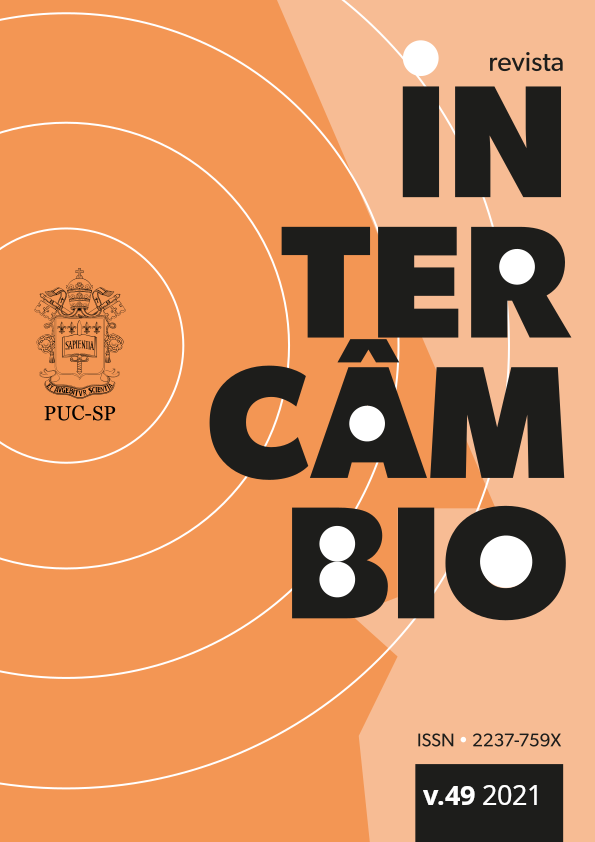Investigating self-assessment and english language teaching
Keywords:
Self-assessment, English language teaching, English language assessmentAbstract
This paper presents part of the results of a qualitative study on self-assessment and English language in high-school, which compares the students’ self-assigned grades and the ones from tests developed by the teacher, based on the concept of performance-oriented self-assessment. The self-assigned grades and the teacher’s grades on an oral task based on criteria previously discussed are compared using the statistical method T-test for paired samples. The results show the difference between the two grades is statistically significant and raise questions and outlines for the use of self-assessment in class.
References
ADELMAN, C., JENKINS, D., KEMMIS, S. Rethinking case study: notes from the second Cambridge conference. Cambridge Journal of Education, v. 6, n. 3, p.139-150, 1976.
BACHMAN, L. F. Learner-directed assessment in ESL. In: G. EKBATANI, H. PIERSON (Eds.), Learner-directed assessment in ESL (pp. ix-xii). New Jersey: Lawrence Erlbaum Associates, Inc., 2000.
BENSON, P. Teaching and researching autonomy in language learning. London: Longman, 2001
BLATCHFORD, P. Students’ self assessment of academic attainment: Accuracy and stability from 7 to 16 years and influence of domain and social comparison group. Educational Psychology, 17(3), p.345-360, 1997.
BLUE, G.M. Self-assessment: the limit of learner independence. In: BROOKES, A.; GRUNDY, P. (eds.). Individualisation and autonomy in language learning. ELT documents, 131. London: Modern English Publications in association with the British Council (Macmillan), 1988.
BRASIL. MINISTÉRIO DA EDUCAÇÃO. Base Nacional Comum Curricular (ensino médio), 2018.
BRASIL. MINISTÉRIO DA EDUCAÇÃO. Diretrizes Curriculares Nacionais para Educação Básica, 1996.
DAVIDSON F. AND HENNING, G. A self–rating scale of English difficulty: Rasch scalar analysis. Language Testing 2: p.164‒179, 1985.
DICKINSON, L. Self-instruction in language learning. London: Cambridge University Press, 1987.
FENER, A. B. AND NEWBY, D. Approaches to materials design in European textbooks: Implementing principles of authenticity, learner autonomy, cultural awareness. European Centre for Modern Languages of the Council of Europe Publishing, 2000.
GHOLAMI, H. Self Assessment and Learner Autonomy. Theory and Practice in Language Studies, v. 6, n. 1, p. 46-51, 2016.
HAUGHTON, G., DICKINSON, L. Collaborative assessment by masters’ candidates in a tutor based system. Language Testing, 5, p.233-246, 1988.
HOLEC, H. Autonomy and Foreign Language Learning. Oxford/New York: Pergamon Press, 1981.
JACOBS, G. M., FARRELL, T. S. C. Paradigm shift: Understanding and implementing change in second language education. TESL-EJ, 5, 1, 2001.
KLENOWSKI, V. Student self-evaluation processes in student-centred teaching and learning contexts of Australia and England. Assessment in Education, 2(2), p.145-163, 1995.
KUNCEL, N. R., Credé, M., Thomas, L. L. The validity of self-reported grade point averages, class ranks, and test scores: A meta-analysis. Review of Educational Research, 75(1), p.63-82, 2005.
LeBLANC, R.; PAINCHAUD, G. Self assessment as a second language placement instrument. TESOL Quarterly, v. 19, n. 4, p. 673-687, Dez. 1985.
LEFFA, V. Língua estrangeira Ensino e aprendizagem. Pelotas: EDUCAT, 2016
LEE, Y. H. Comparing Self-assessment and Teacher’s Assessment in Interpreter Training” T&I Review 1: p.87–11, 2011.
NICOLAIDES, C.; MOZZILLO, I.; PACHALSKI, L.; MACHADO, M.; FERNANDES, V. (Org.). O desenvolvimento da autonomia no ambiente de aprendizagem de línguas estrangeiras. Pelotas: UFPEL, 2003
TROFIMOVICH, P. ISAACS, T. KENNEDY, S. SAITO, K. CROWTHER, D. Flawed self-assessment: investigating self- and otherperception of second language speech. Bilingualism: Language and Cognition 19 (01), p. 122-140, 2016.
OSCARSON, M. Self-assessment of language proficiency: Rationale and applications. Language Testing, 6, p.1-13, 1989.
OXFORD, R.L. Language learning strategies: What every teacher should know. New York: Newbury House, 1990.
PIERCE, B. M., SWAIN, M., HART, D. Self-assessment, French immersion, and locus of control. Applied Linguistics, v. 14, 25-42, 1993.
ROSS, J. The Reliability, Validity, and Utility of Self-Assessment. Practical Assessment, Research and Evaluation, v. 11, n. 10, p.1-13, 2006.
SAITO, Y. The Use of Self-assessment in Second Language Assessment, 2003. Acesso em 02-02-2018. Disponível em: https://journals.cdrs.columbia.edu/wp-content/uploads/sites/12/2015/05/3.3-Saito-2003.pdf.
STRONG-KLAUSE, D. Exploring the effectiveness of self-assessment strategies in ESL placement. In G. Ekbatani, H. Pierson (Eds.), Learner-directed assessment in ESL (pp.49-73). New Jersey: Lawrence Erlbaum Associates, Inc., 2000.
TAN, K. Qualitatively different ways of experiencing student self assessment. Higher Education Research and Development, 27(1), p. 15-29, 2008.
TAVAKOLI, M. Investigating the relationship between Self-assessment and teacher-assessment in a academic contexts: A Case of Iranian university student. The Asian EFL Journal Quarterly, v. 12, n.1, p. 234-260, 2010.
YUCEL, A. S.; KOBACK, C.; CULA, S. An analysis on proactive – reactive personality profiles in student-teacher relationship through the metaphorical thinking approach. Eurasia Journal of Mathematics, Science and Technology Education, 6(2), p.124-137, 2010.
Downloads
Published
How to Cite
Issue
Section
License
Copyright (c) 2021 Eliana Kobayashi

This work is licensed under a Creative Commons Attribution 4.0 International License.






